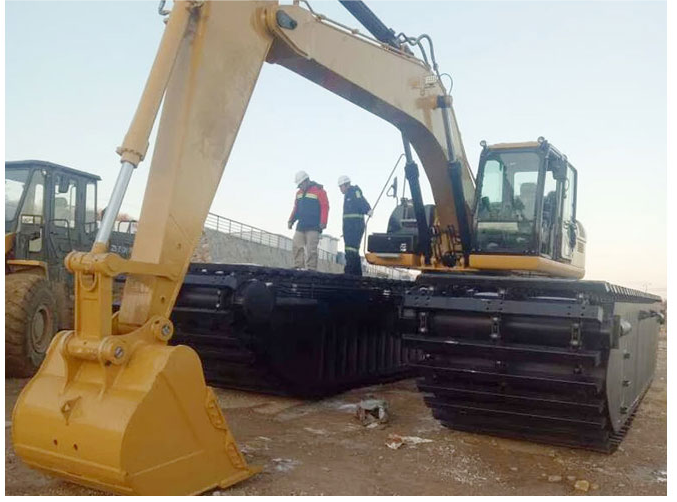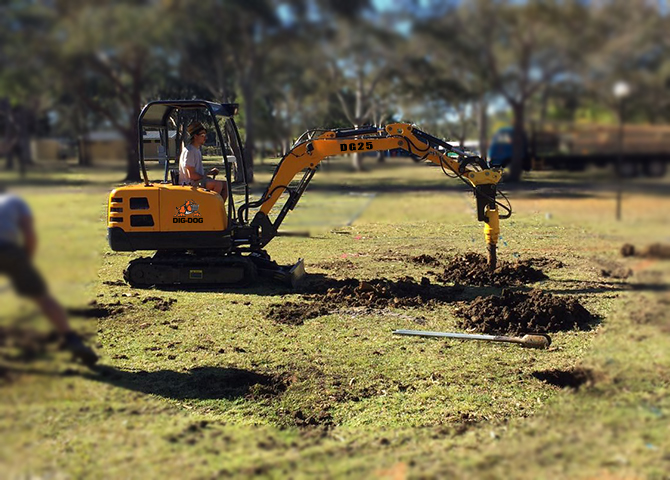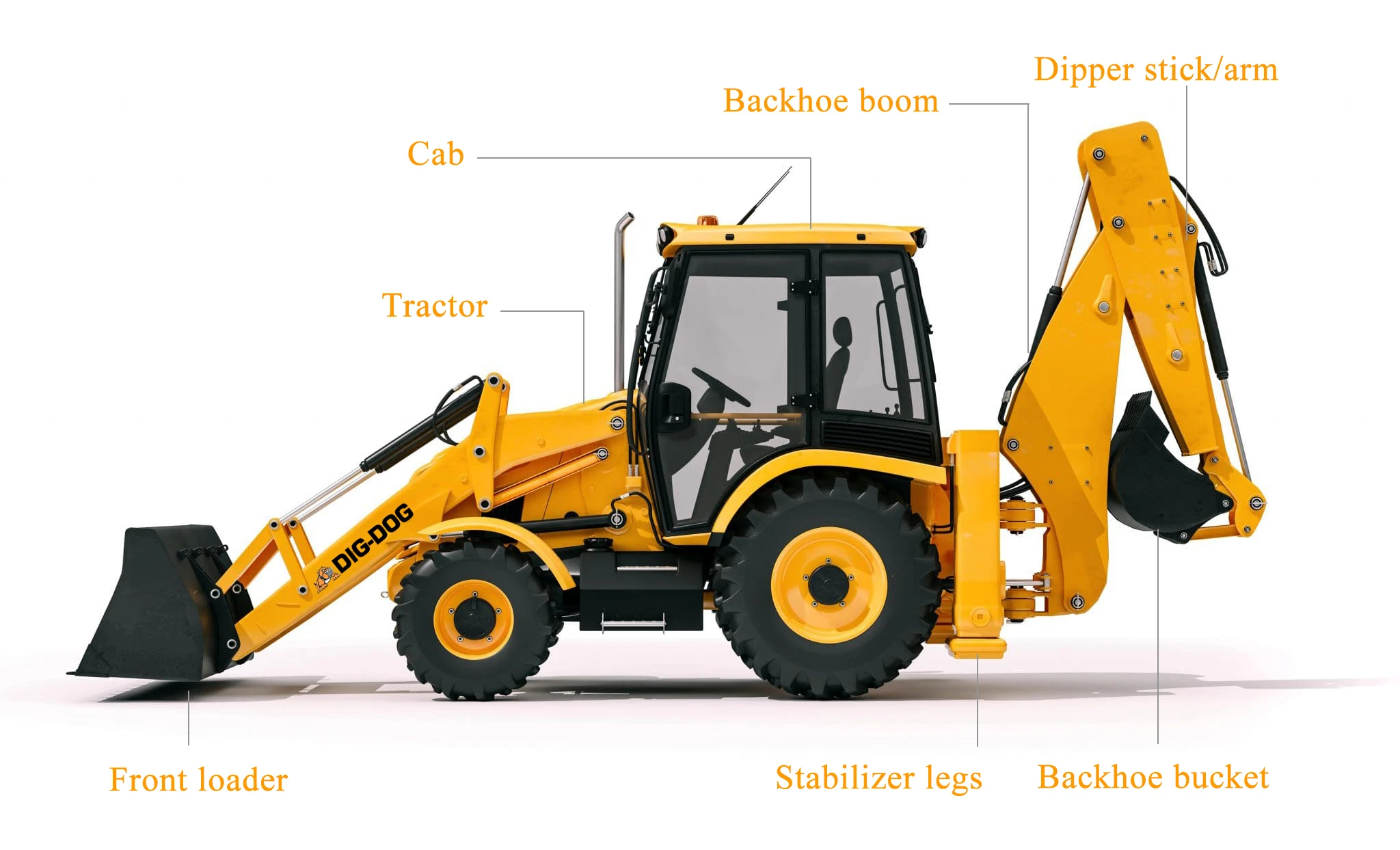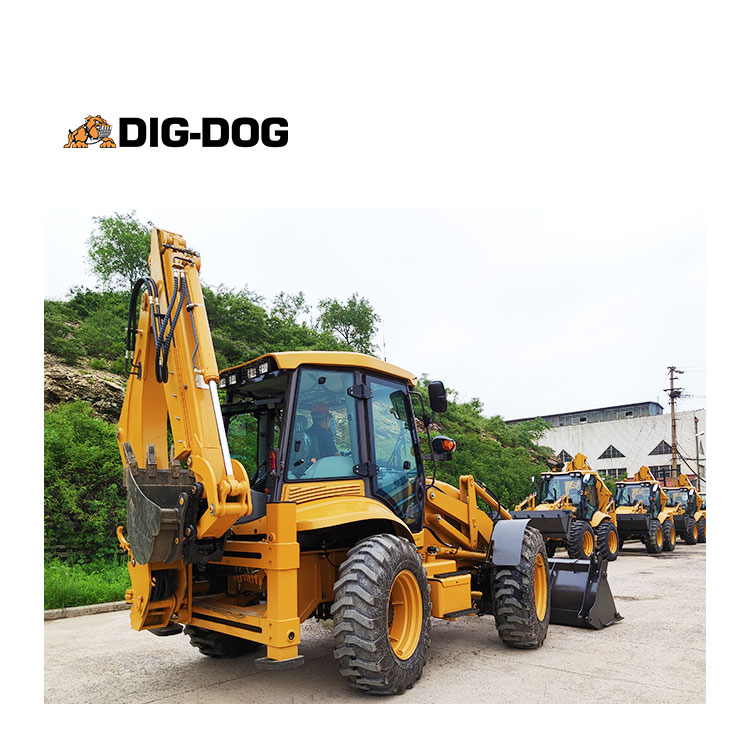From dredging to cleaning, amphibious excavators can be used for many jobs in tough wetlands, but what exactly is an amphibious excavator? What does it do? What are the characteristics? From the perspective of an amphibious excavator manufacturer, we reveal everything you need to know about amphibious excavators that you didn't know before.
What is an amphibious excavator?
An amphibious excavator is an excavator consisting of sealed buoys on both sides of the chassis, allowing the excavator to dredge and remain afloat at all times in shallow water. High-strength steel is used to make the buoys, allowing them to stay in the water and resist corrosion. Because of this, amphibious excavators can perform flawlessly in the most challenging working conditions. The amphibious excavator is completely self-propelled thanks to the hydraulic direct drive track system.
Amphibious excavators and undercarriage
In the field of industrial equipment, the latest innovation is the amphibious excavator dredging chassis. These excavators have the strength and capability to work in the harshest wetlands around the world, especially in Europe and North America. In the past, engineers would find it difficult to move barges into the canal. Some even have to build roads for these excavators, which involves a lot of overhead. To minimize these costs, engineers created the amphibious landing gear. These undercarriages have been proven to provide the buoyancy needed to work in wet conditions. This undercarriage is attached to the excavator along with other heavy equipment. Once they are secured in the correct position, there is no place for additional construction.
The amphibious excavator can easily reach the swamp or river with people
Often, amphibious equipment and workers need to be transported to a location that is too dense to float and too soft to work. Amphibious equipment modifications are necessary because they ensure that workers and equipment can be safely transported to these locations. As mentioned earlier, to transport such heavy equipment, engineers had to build canals, solid ground or other platforms. This work will be time-consuming and expensive, damaging the local environment. With the help of an amphibious excavator, a lot of work and expenses are minimized as now the machine can be transported directly to the job site.
Features of amphibious excavators
The amphibious landing gear can perform many similar functions to conventional excavators, and pontoons keep the excavator afloat in water. Installing vertical pallets is optional as they are only used when there is no operational risk in the absence of uneven terrain.
Heavy Duty Amphibious Excavator
The movement of the amphibious excavator is carried out with the help of the chain, which uses a multi-synchronous hydraulic drive system. Depending on ground conditions, track chains can provide three important benefits: support flotation, provide greater traction efficiency, and provide greater stability, no matter what maneuvers occur. For each given application, the excavator can be perfectly matched with a variety of attachments. Because of this, operators of amphibious excavators can perform countless tasks depending on the industry.
What is the function of an amphibious excavator?
As we all know, amphibious excavators are mainly used for marsh and wetland operations. However, amphibious excavators are also useful in a variety of other industrial applications.
Amphibious excavators are considered the best choice for excavation tasks in riverbeds, marine costs and most importantly in areas that have been hit by floods recently. Amphibious excavators help to optimize working time and save a lot of money in these areas. Additionally, amphibious excavators can make work easier in several other applications, including disaster and flood recovery work, environmental remediation, dredging, highway laying, and pipeline laying.

DIG-DOG's amphibious excavators have their own factories and brands. The engine is powerful, durable, and low fuel consumption. It complies with the national three-stage emission standard and can meet all application requirements. The hollow buoyancy tank structure provides enough buoyancy, which can make the whole machine float on the water surface and ensure the transfer of the whole machine in deep waters. It can guarantee the maximum working water depth of 14m. Most importantly, the three-row chain structure is adopted to improve the safety of walking in water. The unique structure makes disassembly and assembly more convenient.
Our amphibious products are widely used in Europe, America and South Asia. If you are still hesitating whether to buy an amphibious excavator, please feel free to contact us for professional advice and support. 
 Exploring the Cheapest Excavators with Top Performance
Exploring the Cheapest Excavators with Top Performance
 What is a Backhoe? Its Uses & Market Development
What is a Backhoe? Its Uses & Market Development
 What Is The Difference Between An Excavator And A Backhoe?
What Is The Difference Between An Excavator And A Backhoe?